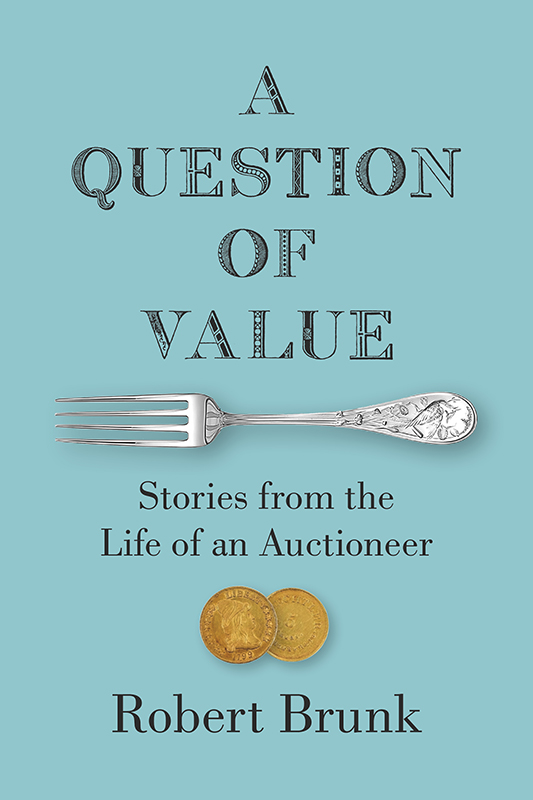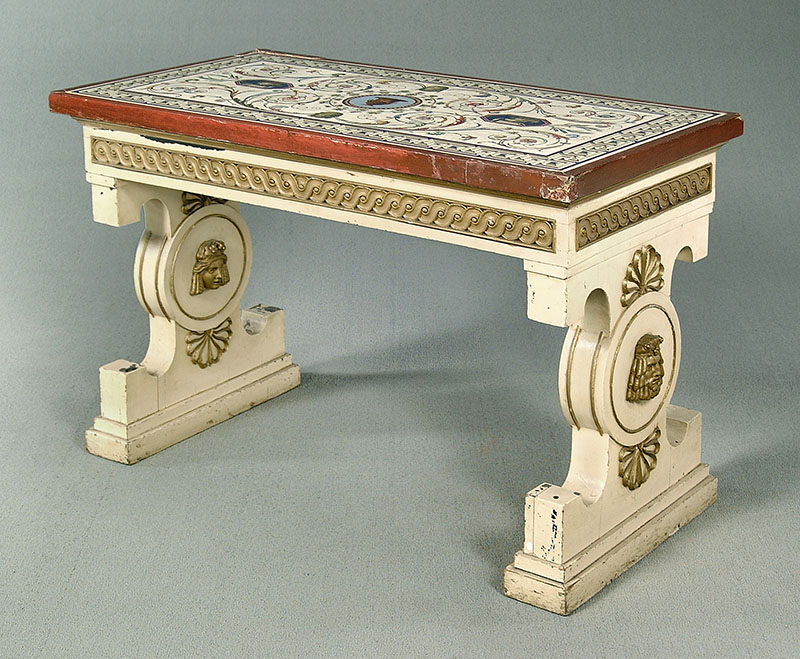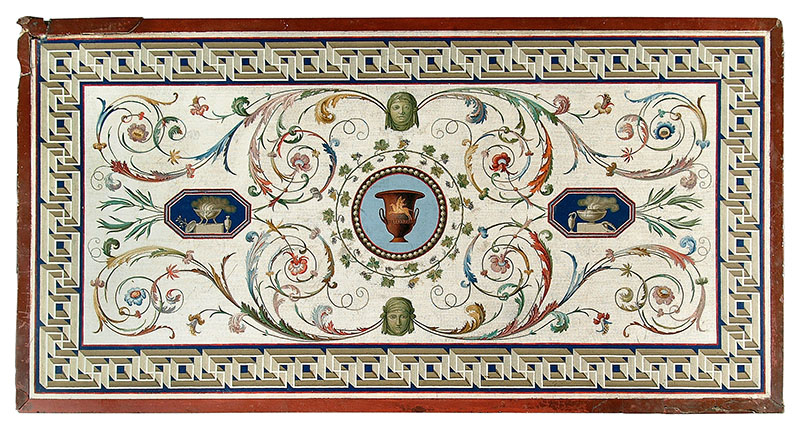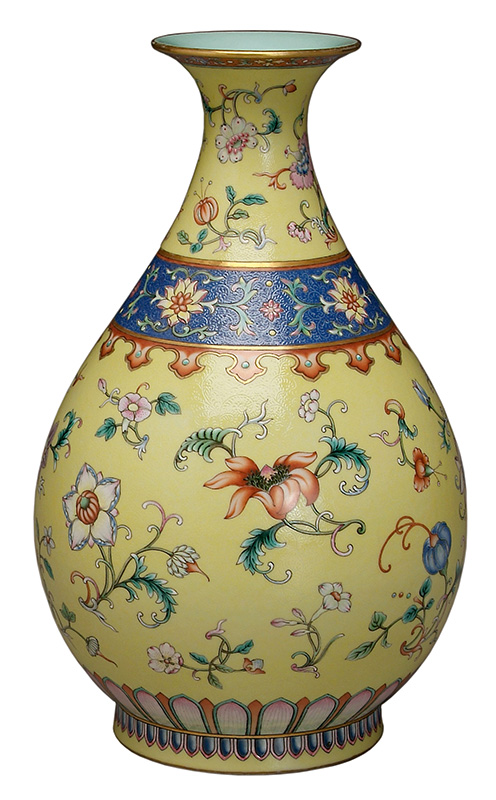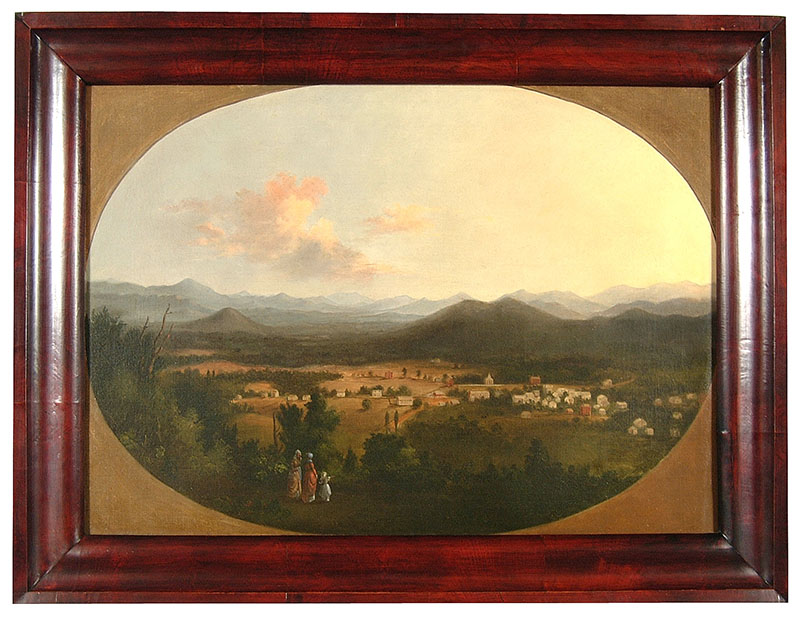Robert Brunk Shares Auction Stories in New Book
by Lauren Brunk
Robert Brunk founded his Asheville, NC, auction business in 1983. In the early years, he sold whatever property was consigned, but the business gradually became known for its focus on decorative and fine arts.
His new book, A Question of Value: Stories from the Life of an Auctioneer (The University of North Carolina Press), consists of 31 nonfiction essays based on the people and events he encountered in his long career. Several remarkable objects are highlighted in these compelling and compassionate stories. Many of his clients were elderly and faced chronic illness and a loss of resources.
In a Virginia estate, a rare late-16th-century Turkish carpet was found in a plastic garbage bag. The carpet was the prototype for centuries of carpets from the village of Karapinar in central Turkey. Moshe Tabibnia came from Milan, Italy, to purchase the carpet against fierce international competition. Bidding opened at $5,000 and concluded at $270,000. The carpet was later described by Dr. Jon Thompson, an Oxford textile historian, as having “extraordinary visual appeal and ranks among great finds of recent times.”1
A group of objects deaccessioned by Hickory Museum of Art in Hickory, NC, included a micro-mosaic table which had been donated to the museum by Adolf Levitt, owner of the Doughnut Corporation of America, which later became Krispy Kreme Doughnuts. The micro-mosaic top by Giacomo Raffaelli in the early 19th century consists of thousands of glass rods arranged in an elaborate classical composition. The wooden base was created by Thomas Hope, a well-known Classical designer often called a Neoclassical designer, and featured in his 1807 book Household Furniture and Interior Decoration. His brother, Henry Phillip Hope, collected precious gems including the Hope Diamond. Against a conservative presale estimate of $5,000–$10,000, the table was hammered down at $440,000.
In the early 2000s, a woman consigned a group of household decorations including a Chinese porcelain vase. It had been purchased in a yard sale and was catalogued as a modern copy with an estimate of $400–800. About half of the many people who examined the vase agreed, others said nothing. In 2009, on a sleepy afternoon at auction, the vase sold for $1,245,000. About five years later, the vase reappeared in a Sotheby’s Hong Kong auction and sold for the equivalent of $7,379,953. Sotheby’s research indicated that the vase was mentioned in the archives as having entered Emperor Qianlong’s collection in 1751.
In 1850, the African American artist Robert Duncanson visited Asheville, NC, and painted a mountain landscape which included the tiny village of Asheville. The painting descended in an Asheville family for four generations and sold in a Brunk Auction in 2003. The family who had owned the painting had enslaved people for several generations. Consideration of this painting created a confrontation with both Asheville’s history of enslavement and Robert Brunk’s family history in which one of his great-grandfathers fought in the Civil War and had enslaved three people. Ultimately, this important picture found its way to a public institution where the conversation continues.
These are a few of the many stories included in this fascinating account of one of the decorative arts auction world’s favorite people.
- Milestones in the History of Carpets, Milan, 2006, p. 226.
Lauren Brunk is Vice President of Brunk Auctions and a member of the Decorative Arts Trust’s Board of Governors.
About The Decorative Arts Trust Bulletin
Formerly known as the "blog,” the Bulletin features new research and scholarship, travelogues, book reviews, and museum and gallery exhibitions. The Bulletin complements The Magazine of the Decorative Arts Trust, our biannual members publication.
Click Images to Enlarge
Did you know that clicking on the images in Bulletin posts will allow you to get a closer look? Simply click on an image, and a larger version will open in a pop-up window.









